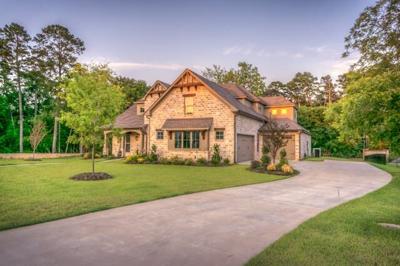
Creating a functional and aesthetically pleasing outdoor space can be challenging when dealing with limited square footage. However, with some thoughtful planning and creative ideas, even the smallest balcony or patio can become a charming oasis. Here are some tips to help you maximize your small outdoor spaces.
1. Define Your Purpose
Before diving into the design process, consider how you intend to use your outdoor space. Do you envision a cozy reading nook, a mini garden, a dining area, or perhaps a combination of these? Defining the primary function will guide your design choices and help you focus on what elements are essential.
2. Choose Multi-Functional Furniture
In a small space, every piece of furniture should serve more than one purpose. Opt for a bench with hidden storage, a table that can extend or collapse as needed, or stools that double as plant stands. Multi-functional furniture maximizes usability without crowding the area.
3. Embrace Vertical Gardening
When floor space is at a premium, think vertically. Vertical gardening is an excellent way to add greenery without sacrificing valuable square footage. Use wall-mounted planters, hanging baskets, or trellises to grow flowers, herbs, and even vegetables. This not only saves space but also creates a lush, green backdrop that enhances the aesthetic appeal of your balcony or patio.
4. Create Illusions with Mirrors
Mirrors can make a small outdoor space appear larger by reflecting light and creating the illusion of depth. Place a large mirror on one wall or incorporate mirrored surfaces on furniture and decorative pieces. This trick can significantly brighten and open up the space, making it feel more expansive.
5. Opt for Foldable Furniture
Foldable furniture is a game-changer for small outdoor spaces. Chairs, tables, and even loungers that can be folded and stored when not in use allow you to free up space as needed. This flexibility is particularly useful if you like to entertain occasionally but need the area to remain open and uncluttered for everyday use.
6. Use Rugs to Define Areas
Outdoor rugs can help define different zones within a small space. For instance, a rug under a bistro table can create a designated dining area, while another rug with comfortable seating can mark a relaxation zone. This visual separation can make your balcony or patio feel more organized and spacious.
7. Add Pergola Designs for Structure and Shade
Incorporating a pergola into your small outdoor space can add both style and functionality. Pergola designs come in various sizes and can be customized to fit even the smallest balconies or patios. A pergola provides shade and a sense of structure, making the area feel like an outdoor room. You can also use the beams of the pergola to hang plants, lights, or even curtains for added privacy and ambiance.
8. Select a Cohesive Color Scheme
A cohesive color scheme can unify your space and make it feel larger. Stick to a limited palette of two or three colors that complement each other. Lighter shades can make the space feel airy and open, while bold accents can add interest and personality. Consider the colors of your plants, furniture, and accessories to create a harmonious look.
9. Integrate Lighting
Good lighting is essential for maximizing the usability of your outdoor space, especially in the evening. String lights, lanterns, and solar-powered fixtures can add warmth and charm. Layer different types of lighting to create a cozy atmosphere—use overhead lights for general illumination and smaller, more focused lights for specific areas like reading nooks or dining tables.
10. Keep it Clutter-Free
Clutter can quickly overwhelm a small space, making it feel cramped and chaotic. Be selective about what you include in your balcony or patio design. Regularly assess your space and remove any items that are not necessary or don’t add value to the area. This minimalist approach will help maintain an open, inviting atmosphere.
11. Utilize Built-In Seating
Built-in seating can save space and provide additional storage. Benches with under-seat storage are particularly useful, allowing you to keep cushions, garden tools, or other items neatly tucked away. Built-in seating can also be designed to fit the exact dimensions of your space, making it a seamless and efficient solution.
12. Personalize with Accessories
While it’s important to avoid clutter, a few well-chosen accessories can add personality and make your outdoor space feel like an extension of your home. Throw pillows, outdoor rugs, and decorative items like lanterns or sculptures can enhance the comfort and aesthetic of your balcony or patio. Choose items that reflect your style and make the space feel welcoming.
13. Incorporate Water Features
Even in a small space, a water feature can create a tranquil atmosphere. Consider a compact fountain or a tabletop water garden. The sound of trickling water can be incredibly soothing and can help mask background noise, making your outdoor space a peaceful retreat.
Maximizing a small outdoor space requires a blend of creativity, planning, and smart design choices. By defining your space’s purpose, choosing multi-functional and foldable furniture, utilizing vertical gardening, and integrating thoughtful accessories, you can transform even the smallest balcony or patio into a functional and beautiful oasis. Incorporating elements like pergola designs can add structure and charm, while strategic lighting and color schemes enhance the overall ambiance. With these tips, your small outdoor area can become a favorite spot for relaxation and enjoyment.
.


(0) comments
We welcome your comments
Log In
Post a comment as Guest
Keep it Clean. Please avoid obscene, vulgar, lewd, racist or sexually-oriented language.
PLEASE TURN OFF YOUR CAPS LOCK.
Don't Threaten. Threats of harming another person will not be tolerated.
Be Truthful. Don't knowingly lie about anyone or anything.
Be Nice. No racism, sexism or any sort of -ism that is degrading to another person.
Be Proactive. Use the 'Report' link on each comment to let us know of abusive posts.
Share with Us. We'd love to hear eyewitness accounts, the history behind an article.